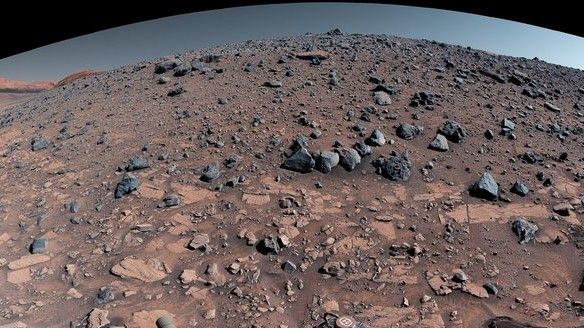NASA's Curiosity Mars rover reaches perilous ridge on Red Planet after 3 failed attempts
By Monisha Ravisetti published about 2 hours ago
Fourth time's the charm.

NASA’s Curiosity captured this 360-degree panorama while parked below Gediz Vallis Ridge (seen at right), a formation that preserves a record of one of the last wet periods seen on this part of Mars. (Image credit: NASA/JPL-Caltech/MSSS)
On Monday (Sept. 18), NASA confirmed that, after three failed attempts, its Curiosity Mars rover managed to reach a precarious destination on the Red Planet: The Gediz Vallis Ridge.
As to why this formation was worth such turmoil for Curiosity? Well, scientists believe that three billion years ago, when Mars was much wetter than the arid land it is now, powerful debris flows carried mud and boulders down the side of a mountain in the vicinity known as Mount Sharp. According to NASA, this debris "spread into a fan that was later eroded by wind into a towering ridge."
In practical terms, that backstory means this ridge holds proof of Mars' blue past — and maybe more excitingly, information about the planet's ancient, dangerous landslides.
"I can’t imagine what it would have been like to witness these events,” geologist William Dietrich, a mission team member at the University of California, Berkeley, said in a statement. "Huge rocks were ripped out of the mountain high above, rushed downhill, and spread out into a fan below. The results of this campaign will push us to better explain such events not just on Mars, but even on Earth, where they are a natural hazard."
More:
https://www.space.com/nasa-curiosity-rover-mars-gediz-vallis-ridge
